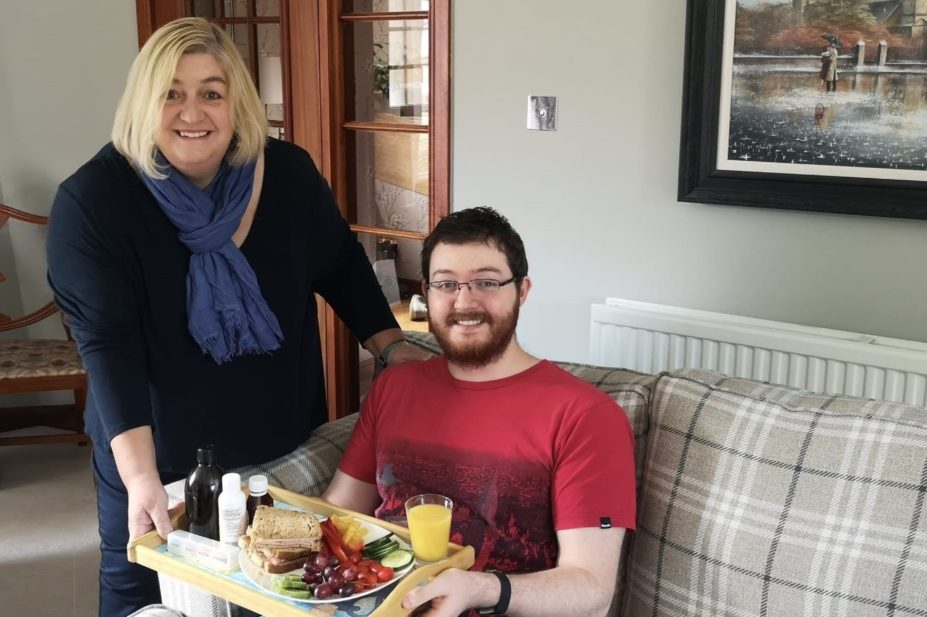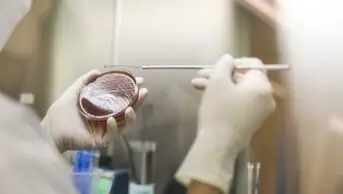
Arlene Brailey
I am employed as a patient support officer for Antibiotic Research UK, a charity established to tackle antibiotic resistance; a major international public health problem. According to official reports, antibiotic resistance causes 33,000 deaths in Europe and between 5,000–6,000 deaths in the UK annually. If action is not taken, it is estimated that by 2050, 10 million people globally could die each year from the impact of antibiotic resistance.
A study of 191 hospital patients in Wuhan, China, recorded secondary bacterial infections in 50% of those who lost their lives to COVID-19. This is a timely reminder of why we need to invest in developing new antibiotics.
My role involves responding to patients who are experiencing bacterial infections resistant to antibiotics, and who are seeking support and information. The nature of my role allows me to work from home in Edinburgh, but I regularly draw upon my 25 years of pharmacist experience and project management skills gained in my previous roles as assistant director of NHS Education for Scotland (Pharmacy) and education lead for the Scottish Antimicrobial Prescribing Group. My role as education lead included the production of educational resources for pharmacists, nurses, GPs and foundation-year medics.
09:00 — start
My first task is to review new emails and voicemails addressed to the patient support officer.
For queries that require additional information, I conduct some research into the topic. This may involve looking up infections or medical terms I am unfamiliar with. However, my role is all about listening, supporting and signposting to reliable information; it’s not about giving specific medical advice — that’s the role of the patient’s medical team as they will have the full picture of the patient’s condition, along with their clinical history.
My first step is to reassure them that I will do my best to provide relevant information or additional sources of help
I return a patient’s call about recurring leg cellulitis. My first step is to reassure them that I will do my best to provide relevant information or additional sources of help. I emphasise at the start of every call that I cannot give specific medical advice and explain why. During the call, I discover the patient is allergic to penicillin, which was discovered as a result of a rash that occurred years ago. Despite being prescribed antibiotic prophylaxis, the patient was still admitted to hospital with severe cellulitis on several occasions.
As I listen, I begin forming an action plan. I initially suggest that the patient should ask their GP to contact the local clinical microbiologist for advice on treatment options, as well to check if this is a true penicillin allergy. I offer to contact my specialist colleagues for advice. After the call, I put out a ‘high priority’ request to a microbiologist and an antimicrobial pharmacist via our online portal. I document details of the call in a confidential database and mark the case as ‘waiting for response’. The patient has already emailed to thank me for listening, illustrating that patients do not always expect me to have the answers and that careful listening is underrated.
11:00
I speak to a colleague at Public Health England to discuss a pilot project in community pharmacy tackling antibiotic resistance. They agree to include leaflets in a resource pack highlighting the patient support offered by Antibiotic Research UK for distribution to 150 community pharmacies. I can already see the mutual benefits in partnership working, helping provide better information, care and support to patients.
The challenge is to use simple language, free of jargon
I then review patient resources about Klebsiella pneumoniae and methicillin resistant Staphylococcus aureus, before forwarding them to an expert panel of clinicians, nurses and pharmacists to check the technical and medical details. I also share them with lay patient representatives who ensure the resources can be understood easily — the challenge is to use simple language, free of jargon.
12:30
During my lunch break I take food, drinks and medicine to my son, who is chronically unwell following a tick bite he received while hill climbing a few years ago. Working from home allows me to care for him.
Back then, little was known about the complications of tick-borne infections, such as Lyme disease. The struggle to discern reliable information amid all the misinformation on the internet, with no one available to listen or understand, was the motivation for me to undertake my current role.
I feel I am now putting my own experience to good use, helping others who are facing similar issues.
13:30
After lunch I check my afternoon emails and the messages on our social media page.
There is a concerning email from a patient asking for information about extended spectrum beta lactamase (ESBL) Escherichia coli. I prioritise this over other plans and call the patient immediately. They are feeling extremely anxious and explain how, after experiencing recurrent urinary tract infections, they were admitted to hospital suddenly and deteriorated very quickly. The patient recalls feeling as if they were dying when subsequently diagnosed with sepsis. During their three-week intravenous antibiotic treatment, they were informed that they were carrying this resistant strain of E. coli. Despite being moved to a single isolated room, they were not provided with an explanation of what carrying ESBL E. coli meant, nor its post-discharge implications. Their distress is tangible and I promise to follow up with some written information by email that they can read later.
14:30
I know the patient voice is extremely powerful
I am asked by a senior colleague to provide a short presentation at two scientific conferences discussing strategies to fight antibiotic resistance, with a focus on the patient perspective. I gladly accept because I know the patient voice is extremely powerful — it reminds us, as scientists and healthcare professionals, why antibiotic resistance must be a priority. In the same way the COVID-19 pandemic has focused attention on the threat to each individual, I emphasise the costly impact on patients’ lives already, and the catastrophic risk to each one of us in the future if we fail to develop new antibiotics now.
15:00
I join a conference call with the charity’s Education Committee members across the UK, to whom I report. I outline my quarterly progress as part of my objectives. These include identifying information and support for patients with antibiotic resistant infection; identifying gaps in current provision; providing a single point of contact for patient support and online information within Antibiotic Research UK; organising an annual workshop for patients to meet with scientific and clinical experts; creating newsletters, written patient information and promotional material; and giving presentations to patients and the public.
16:30
My final task is to read and summarise the responses of my expert colleagues on the cellulitis case from earlier. I call the patient and relay suggestions of possible options for them to discuss with their GP. It is satisfying to receive assurance about my earlier suggestion for the patient’s GP to call the microbiologist directly, as well as challenging the documented penicillin allergy. I quickly receive a reply from the patient saying “Thank you very much for your help — it’s been very comforting and very useful. It gives me the confidence to have a meaningful discussion with my doctor.”
17:00 — finish
I spend an hour working on an educational programme for GPs and pharmacists on recognising, diagnosing and treating Lyme disease as part of my voluntary role as a trustee of a Scottish charity called the Lyme Resource Centre.
I end the afternoon on a positive note and reflect on how satisfying it feels to use my personal and professional experience, knowledge and skills to help patients in this unique role.
I would encourage other pharmacists looking for a new challenge to consider similar alternative avenues, such as charity or patient support roles — they too will discover just how rewarding it can be.
Patients with resistant bacterial infections can email me for information or support at patient.support@antibioticresearch.org.uk or call 07367 784114.
The patients mentioned in this article have been anonymised.
Are you interested in a similar role?
- My role is a paid role which equates to NHS Agenda for Change band 8b;
- Good communication skills are vital, as is the ability to work autonomously and as part of a team (often virtually);
- Gain experience outside of work — for example, through voluntary work such as scouts/guides, serving at a homeless food kitchen or volunteering with church groups;
- Be able to demonstrate compassion, care and concern, but also objective thinking and the ability to think clearly in highly emotional situations. For example, adhering to the General Data Protection Regulation and maintaining confidentiality while sticking to guidelines or recommended pathways of care;
- Become a member of groups that relate to your particular topic of interest. For me, these are the Association of Scottish Antimicrobial Pharmacists and the Sepsis Trust to better understand how they support people, and where the overlap and similarities may be;
- The Helplines Partnership has useful information for those interested in a support role.


